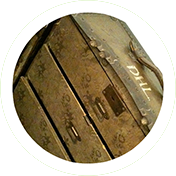All people dream, but not equally.
Those who dream by night in the dusty recesses of their mind,
Wake in the morning to find that it was vanity.
But the dreamers of the day are dangerous people,
For they dream their dreams with open eyes,
And make them come true.
According to D.H. Lawrence we all dream, but some dreamers are more unequal than others. There are those who dream at night with their eyes shut, and those who dream in the sun with their eyes wide open. Before we examine this a little deeper, let’s take a moment to reflect on the purpose of sleep given that it has become such a hot topic of late.
Lack of sleep can make us fat. It can increase the risk of a stroke. It can cause depression, etc – you get the picture. Whereas plenty of shuteye can improve concentration and productivity. Sleep functions as a kind of housekeeper that removes toxins in your brain that build up while you are awake. According to neuroscientist Matthew Walker (no relation), lack of suboptimal shut-eye levels can also have an effect on your testicles, and whether you live into your mid 60s. All of this got me thinking about my dad who proudly got by on 4-5 hours a sleep a night. For him, sleeping was an affront to life. You made the most of everyday and maximised the hours. He was overweight, had a stroke and died at 67. But he never suffered from depression and there was nothing wrong with his testicles – he had eight children. He was incredibly productive – running his own business because he hated people telling him what to do. His downfall wasn’t lack of sleep. It was a love of cigars, Mars bars and quadruple whiskies.
I don’t care much for the latest lifestyle tip. I’m old enough to have read that drinking wine is good for your health only for it to be reinvented as middle-class smack. Woe betide anyone taking more than two glugs on a school night. Lawrence would certainly scoff at such advice having lived his entire life in denial at his own poor health. The mere mention of a doctor sent him into a rage. So I doubt he would care to be told how many hours kip he needed to sleep each night.
Dreams, on the other hand, are more complex. They are either a weird by-product of sleep – like plastic is to oil, or some kind of clever programming that functions to preserve the brain, a bit like how a screensaver protects computer monitors from phosphor burn-in when not being used.
Our brains digest so much information throughout the day that it has to be processed somehow. Take this blog. As I type my brain is also observing a messy desk with coffee stains, the picture of a dinosaur pinned to the wall behind the monitor, tuning into overheard Brexit debates in the office. This irrelevant data has to be classified, ordered and expunged. Dreams, then, are a bit like C Cleaner. They defrag. They take all of this collected information and mash it together into a surreal narrative. In this respect, dreams are incredibly democratic as all of the non-essential data gets a more prominent role when we hit the pillow. Tonight I’ll be dreaming of being chased by a coffee slurping dinosaur screaming ‘remain and you’ll die. Leave and you’ll be free’.
Lawrence wasn’t a fan of democracy, believing, like Nietzsche, that levelling down dimmed the light of those destined to lead. As abhorrent as that might sound to modern ears – and clearly it does have its problems – it needs to be seen in context. Lawrence’s work was censored, banned and vilified for daring to offer alternative ways of living on Planet E. The nation as a democratic ideal was responsible for an ugly passivity that brought about harm to the environment and stifled spiritual growth. Modernity claimed to bring about progress but all this meant was the destruction of the natural landscape, as well as producing bullets and bombs that would kill millions of people in the trenches.
Lawrence had no time for resting his head on a pillow and taking refuge in sleep. There were too many battles to be fought in daylight. We see this in his restlessness, making his way across the globe in search of Rananim, settling nowhere for more than two years, refusing to own property because he knew possessions ended up possessing you. We see it time and again in his novels, not least in Kangaroo where Richard Somers outlines ‘a new religious idea’ that ‘must gradually spring up and ripen before there could be any constructive change. And yet he felt that preaching and teaching were both no good, at the world’s present juncture. There must be action, brave, faithful action: and in the action the new spirit would arise.’
This is why Lawrence remains relevant today. He was a dangerous person in a peaceful sense. He dared to dream with his eyes wide open.

In the DH Lawrence Memory Theatre we want to address various aspects of Lawrence’s life through artefacts to try to understand this complex writer. How do we convey Lawrence’s ideas about dreaming with your eyes wide open when it’s a lot easier to keep them shut? In 2019 we begin building our Memory Theatre and retracing Lawrence’s savage pilgrimage both physically and digitally. If you have an idea for an artefact get involved and submit ideas here
Other promo videos
















